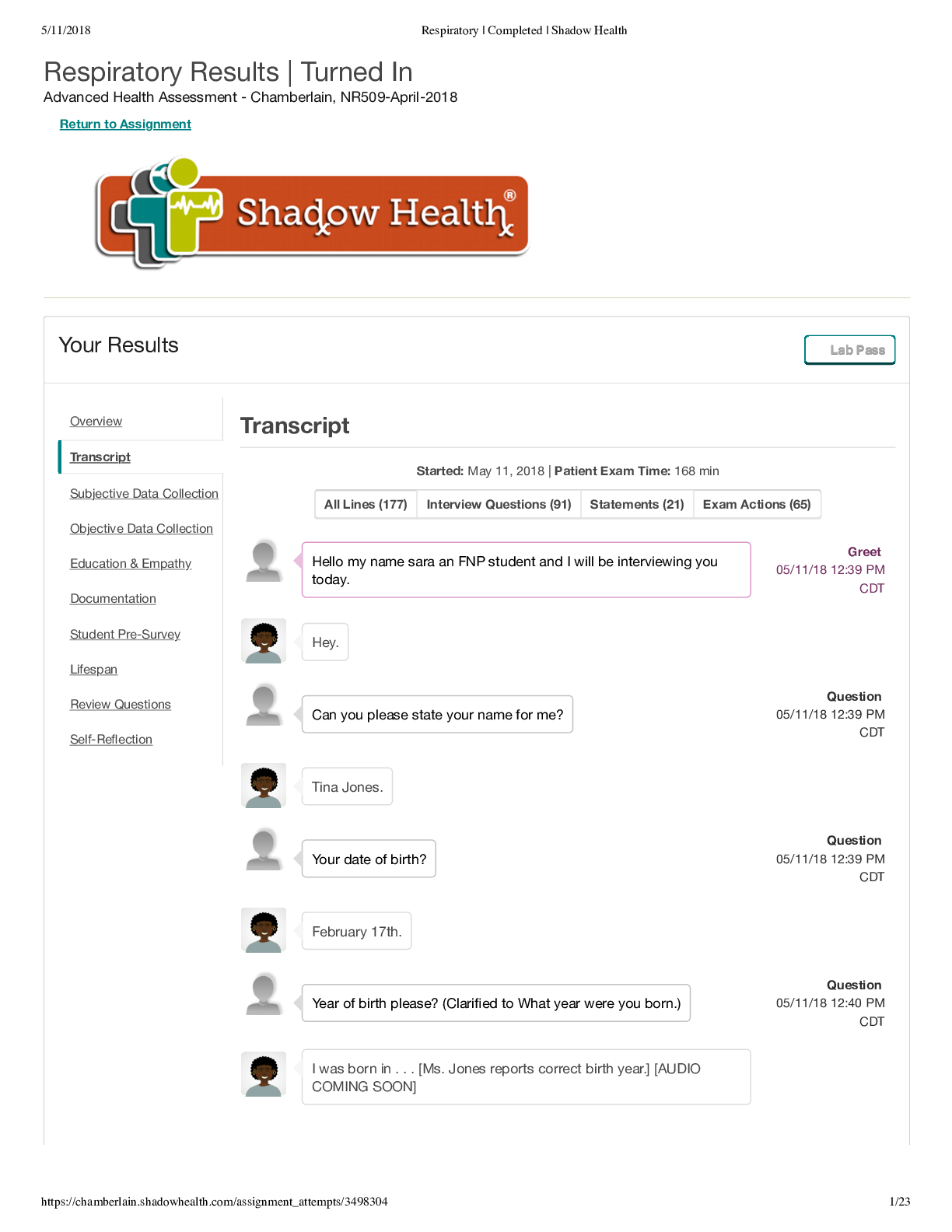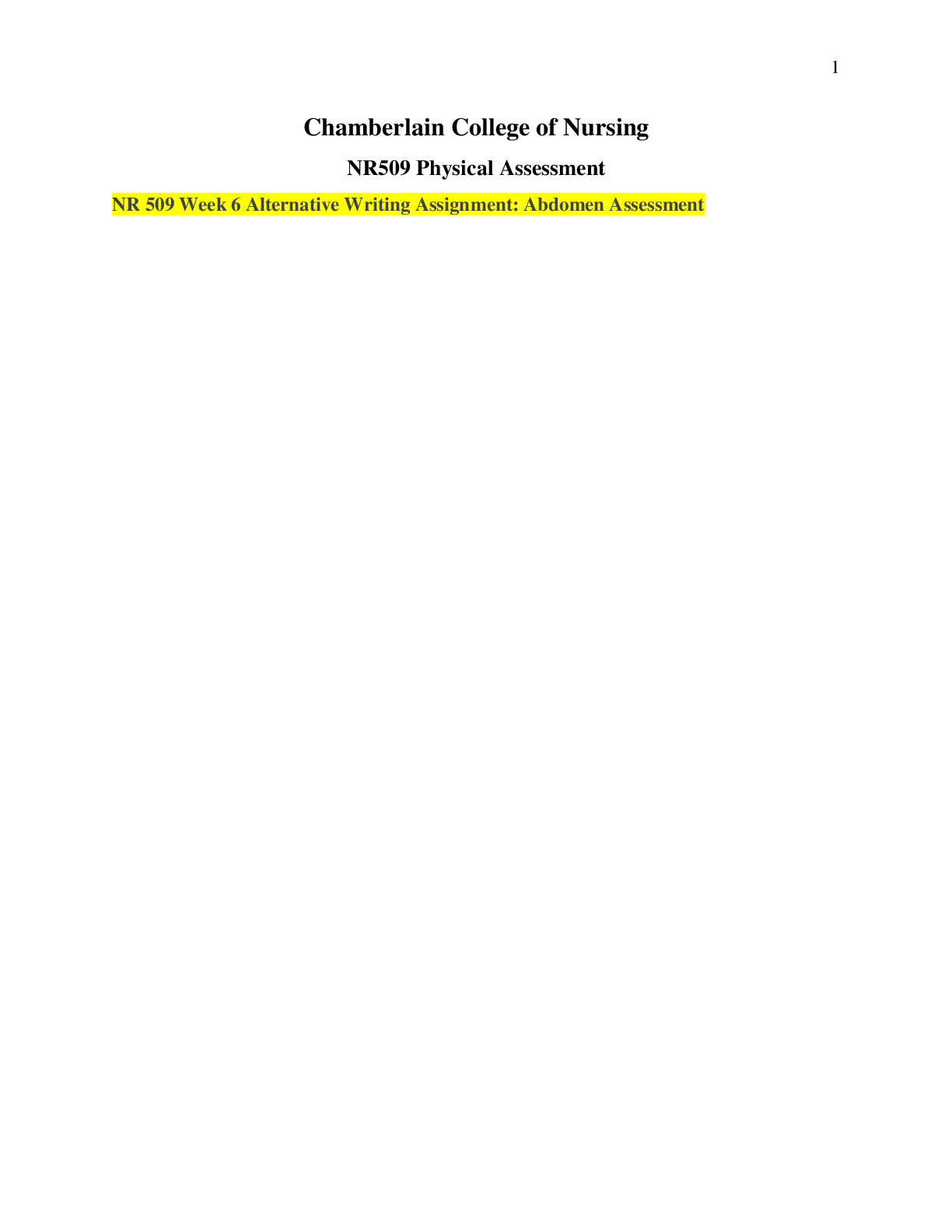Anatomy > CASE STUDY > BIOS 252 Week 5 Case Study Assignment: Special Senses (GRADED A) | Chamberlain University College of (All)
BIOS 252 Week 5 Case Study Assignment: Special Senses (GRADED A) | Chamberlain University College of Nursing
Document Content and Description Below
Week 5 Case Study: Special Senses Chamberlain University College of Nursing Anatomy & Physiology II with Lab 1. The CT reveals several issues with the cranial structure, one of which mi... ght be in the cribriform plate but the image isn't well defined. What non-invasive test can you do to test if the cribriform plate is severely damaged? Why? A cerebral spinal fluid (CSF) leak is frequently connected with cribriform plate fractures or injury. I can take samples of the patient's nasal and/or otic secretions and test them for beta trace protein and beta-2-transferrin. Since beta trace protein and beta-2-transferrin is present and detected in high concentrations in CSF, positive testing of these two chemicals provide indication of a CSF leak (Gomez, 2021). A cribriform plate fracture is a potentially dangerous injury that is often ignored. It's a sign of significant head or facial trauma if it's present. Septal hemorrhage, olfactory impairment, CSF leak, and infection have all been linked to cribriform plate fractures (Gomez, 2021). The pledget study is a non-invasive technique that can be done to see if the cribriform plate is significantly damaged. In a pledget study, little cotton pads, commonly known as pledgets are inserted into the nose. This test confirms the presence of a CSF leak, but it does not give us the exact location of the leak. A CT cisternogram would be used to pinpoint the exact location of the leak (Kieffer, 2018). 2. The doctor tests the patient's field of view with an astigmatism chart and finds that the patient states that there are blind spots and distorted lines in both eyes he never noticed before. These blinds spots and distortions remain constant. What structure within the eye could cause these distortions? How can you verify your suspicion? Waves, abnormalities, or ripples in the visual impressions created by the eyes are referred to as distortion. Straight lines of things may appear wavy or uneven when vision is affected. Imperfections and creases in the cornea or retina can cause vision distortion. These distortions could be caused by the presence of a vitreous hemorrhage. When a blood artery ruptures, blood spills into the vitreous humour of the eye. A slit lamp will be used to examine the inside of the eye in more detail. The examiner will use the slit lamp to see if there is any blood in the vitreous. To determine the source of the bleeding, an ultrasound scan of the eye can be used (Lowth, 2018). A central scotoma is a blind spot in one's vision that occurs in the middle. It can manifest itself in a variety of ways. For some, it may seem as a black or grey spot, while for others, it may appear as a fuzzy smudge or a distorted picture in straight-ahead vision. Cells develop on the smooth retinal membrane to form epiretinal membranes. This cellular growth has the potential to constrict, pulling on the retina and causing vision distortion. 3. Both his lungs have received some damage and both tympanic membranes have burst during the explosion. Why? Primary blast injuries are linked to lung injury and a blown tympanic membrane. The direct or reflecting over-pressurization force impact of the high-energy explosion to the body's surface damages these organs (Saladin, 2019). Primary blast explosions, such as those used to start the hottest grill fire, can be undetectable. Any casualty should be checked for blast lung. If the grill pressure exceeds 40 psi, the sufferer may suffer from pulmonary contusions, pneumothorax, air embolism, interstitial parenchymal damage, and other complications (Jorolemon, 2021). Simply by inferring that the grill exceeded the 40-psi limit and caused harm to the 42-year-old man's lungs and both tympanic membranes, the grill was found to have exceeded the 40-psi restriction. References Gomez, J. (2021, September 18). Cribriform Plate fractures. StatPearls [Internet]. Retrieved November 23, 2021, from https://www.ncbi.nlm.nih.gov/books/NBK562192/. Jorolemon, M. R. (2021, July 19). Blast injuries. StatPearls [Internet]. Retrieved November 23, 2021, from https://www.ncbi.nlm.nih.gov/books/NBK430914/. Kieffer, S. (2018, December 3). Cerebrospinal fluid (CSF) leak: Johns Hopkins Skull Base Tumor Center. Cerebrospinal Fluid (CSF) Leak: Johns Hopkins Skull Base Tumor Center. Retrieved November 23, 2021, from https://www.hopkinsmedicine.org/brain- tumor/specialty-centers/skull-base/types/csf-leak.html. Lowth, M. (2018, July 31). Vitreous hemorrhage. Patient. https://patient.info/eye-care/visual-problems/vitreous-haemorrhage Saladin, K. (2019). Anatomy and Physiology: The Unity of Form and Function (9th ed.). McGraw-Hill. [Show More]
Last updated: 2 years ago
Preview 1 out of 5 pages

Buy this document to get the full access instantly
Instant Download Access after purchase
Buy NowInstant download
We Accept:

Reviews( 0 )
$11.00
Can't find what you want? Try our AI powered Search
Document information
Connected school, study & course
About the document
Uploaded On
Sep 06, 2022
Number of pages
5
Written in
Additional information
This document has been written for:
Uploaded
Sep 06, 2022
Downloads
0
Views
103



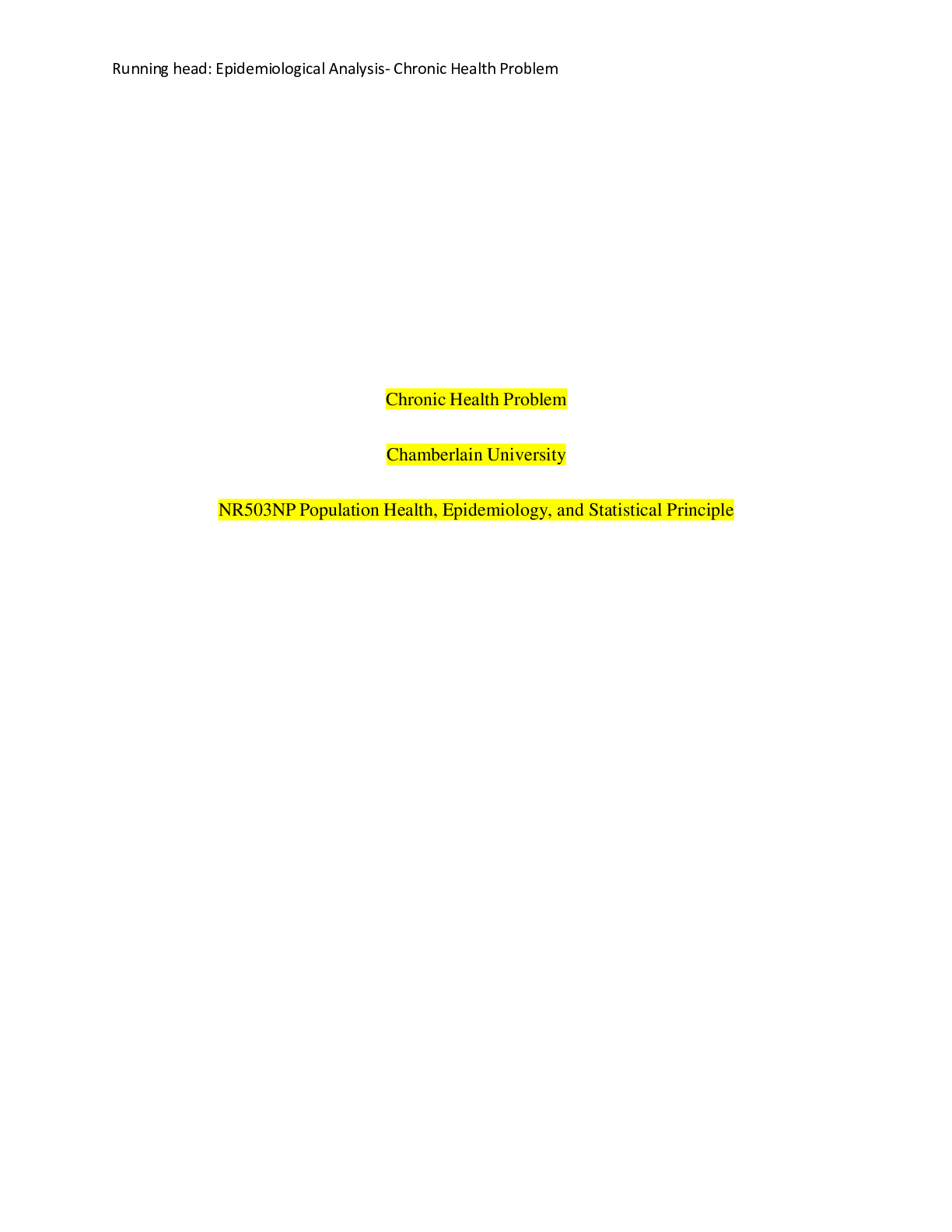
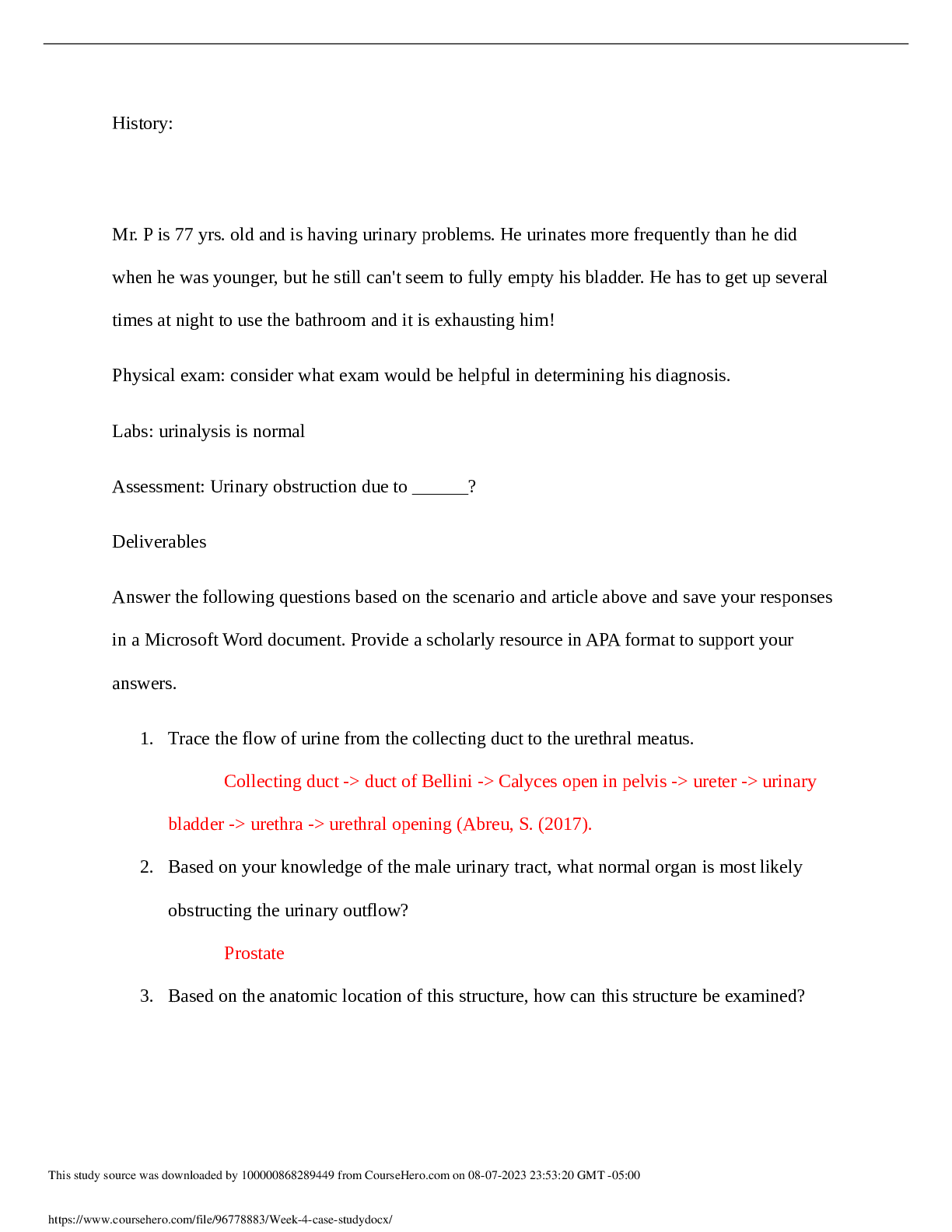


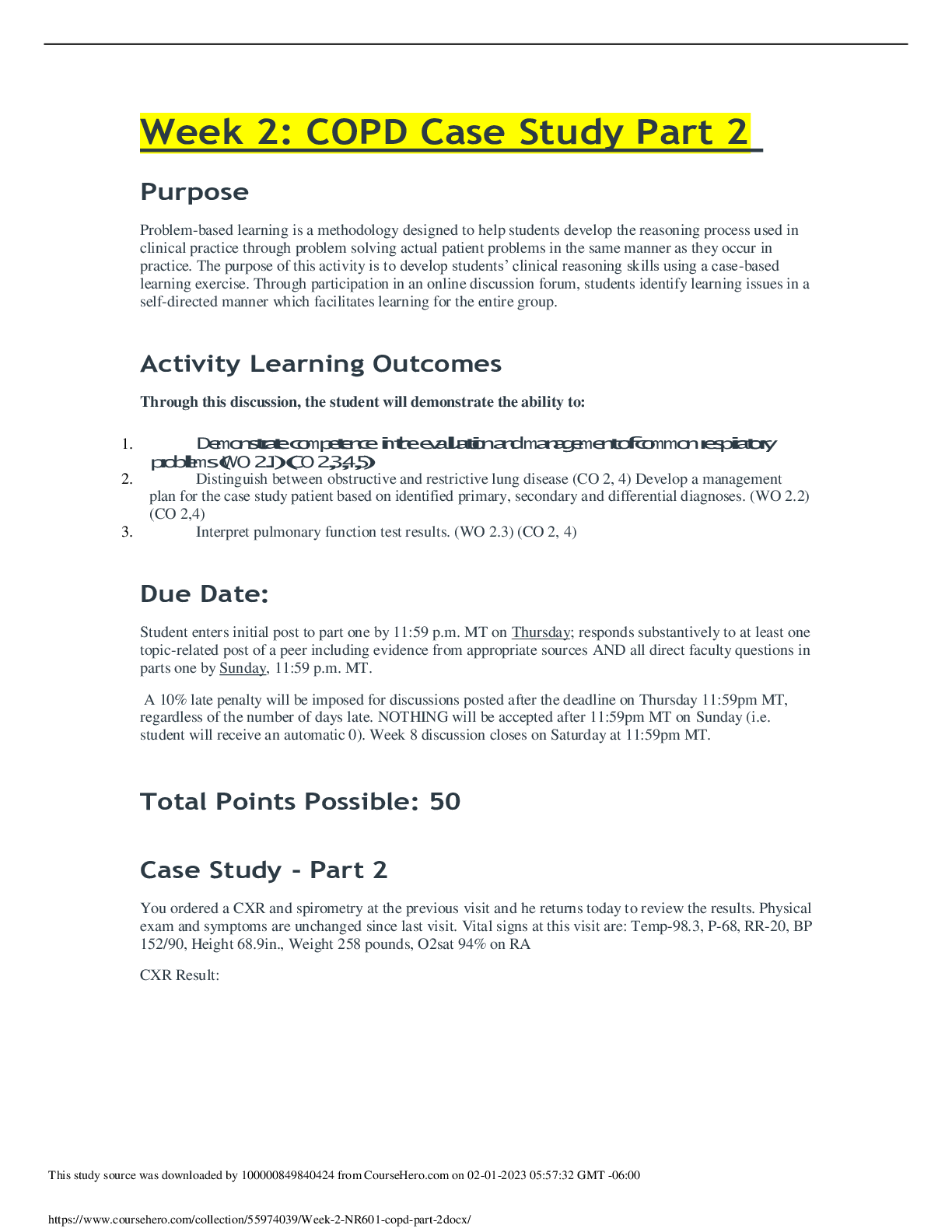
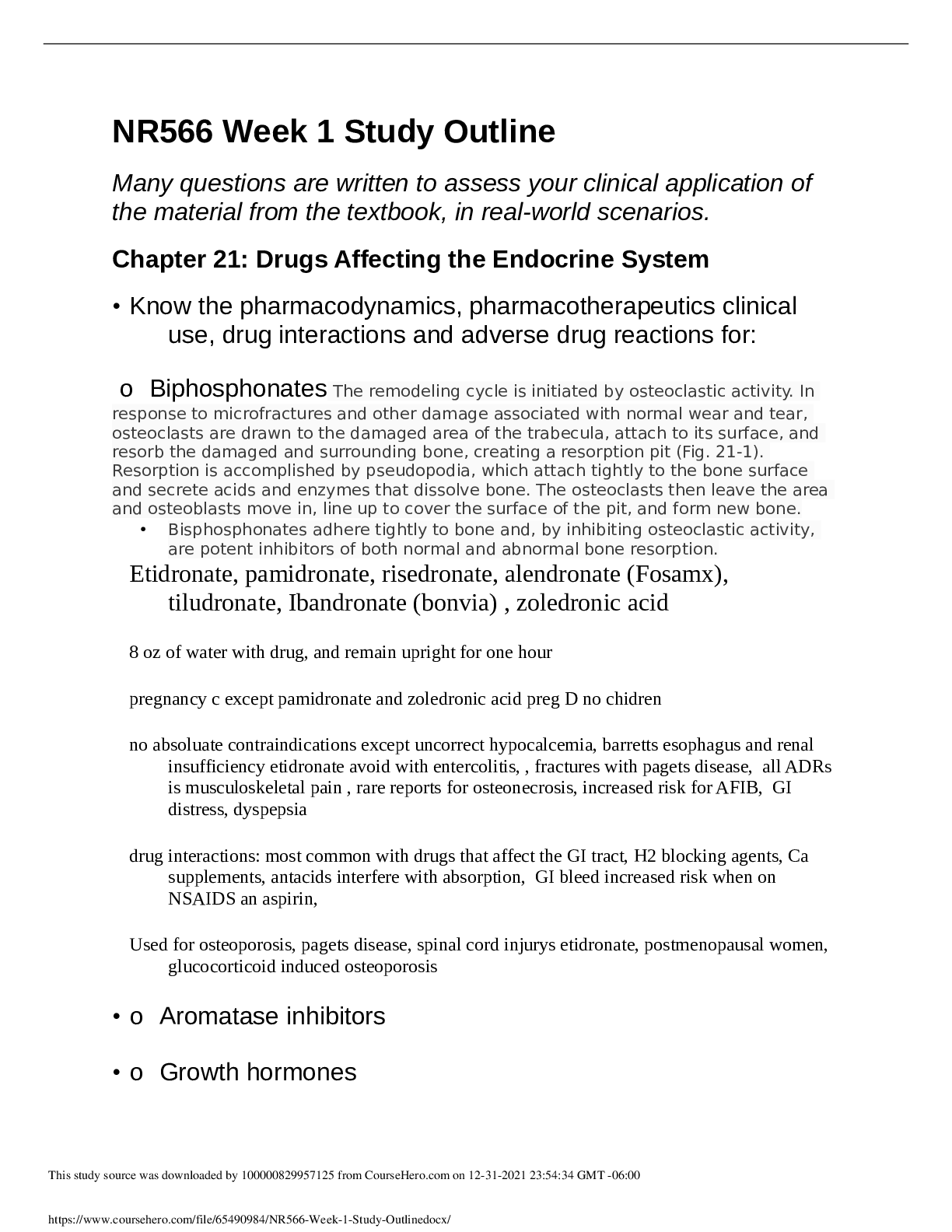





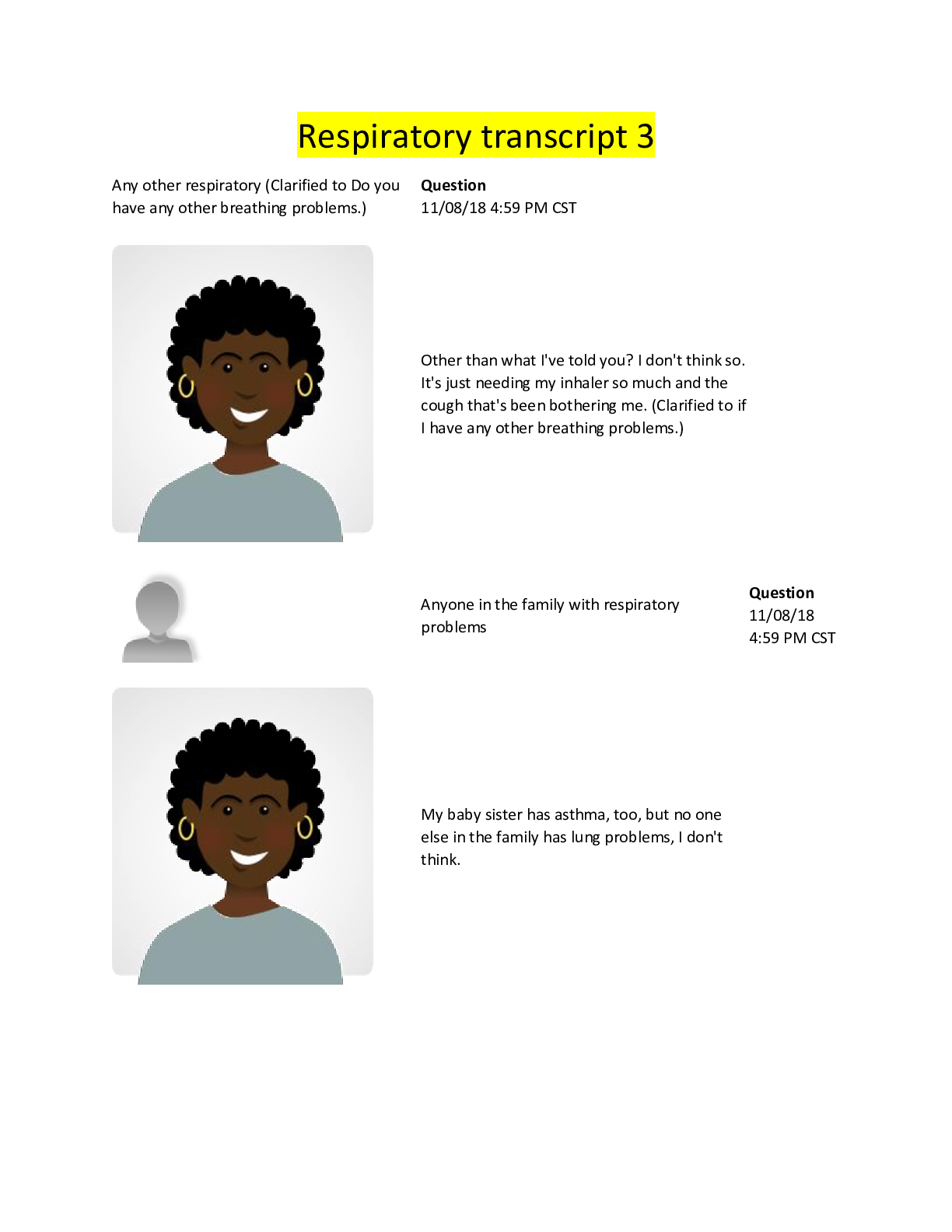
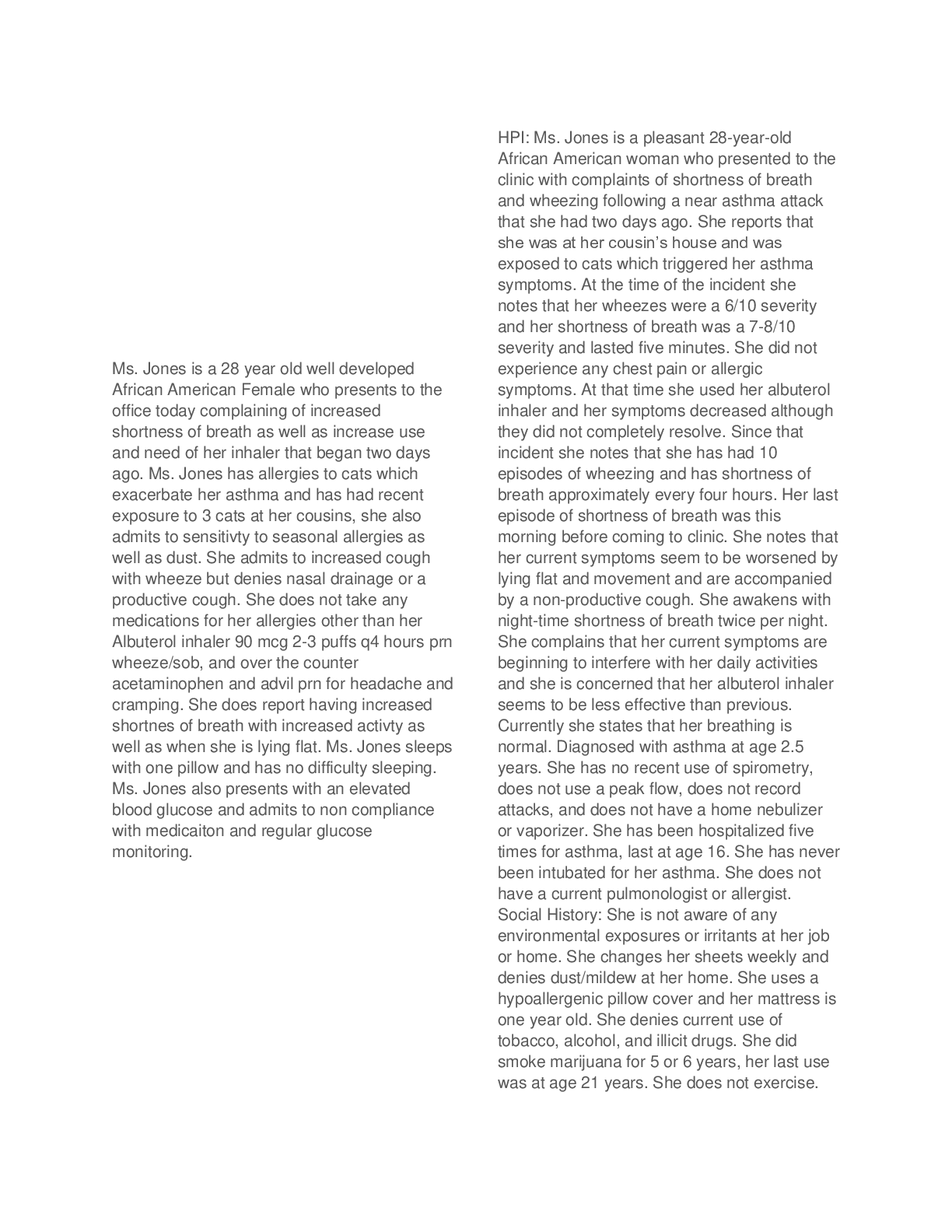


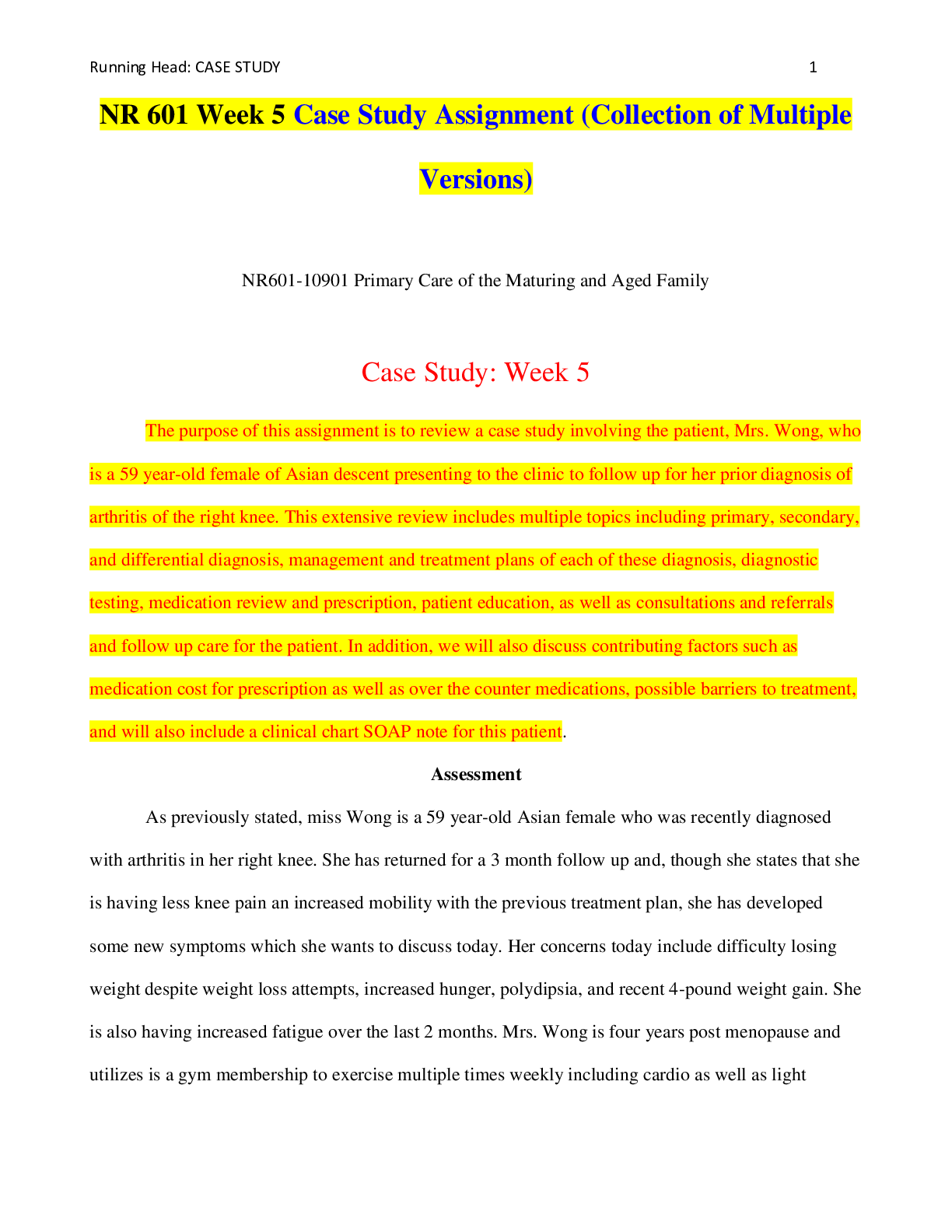
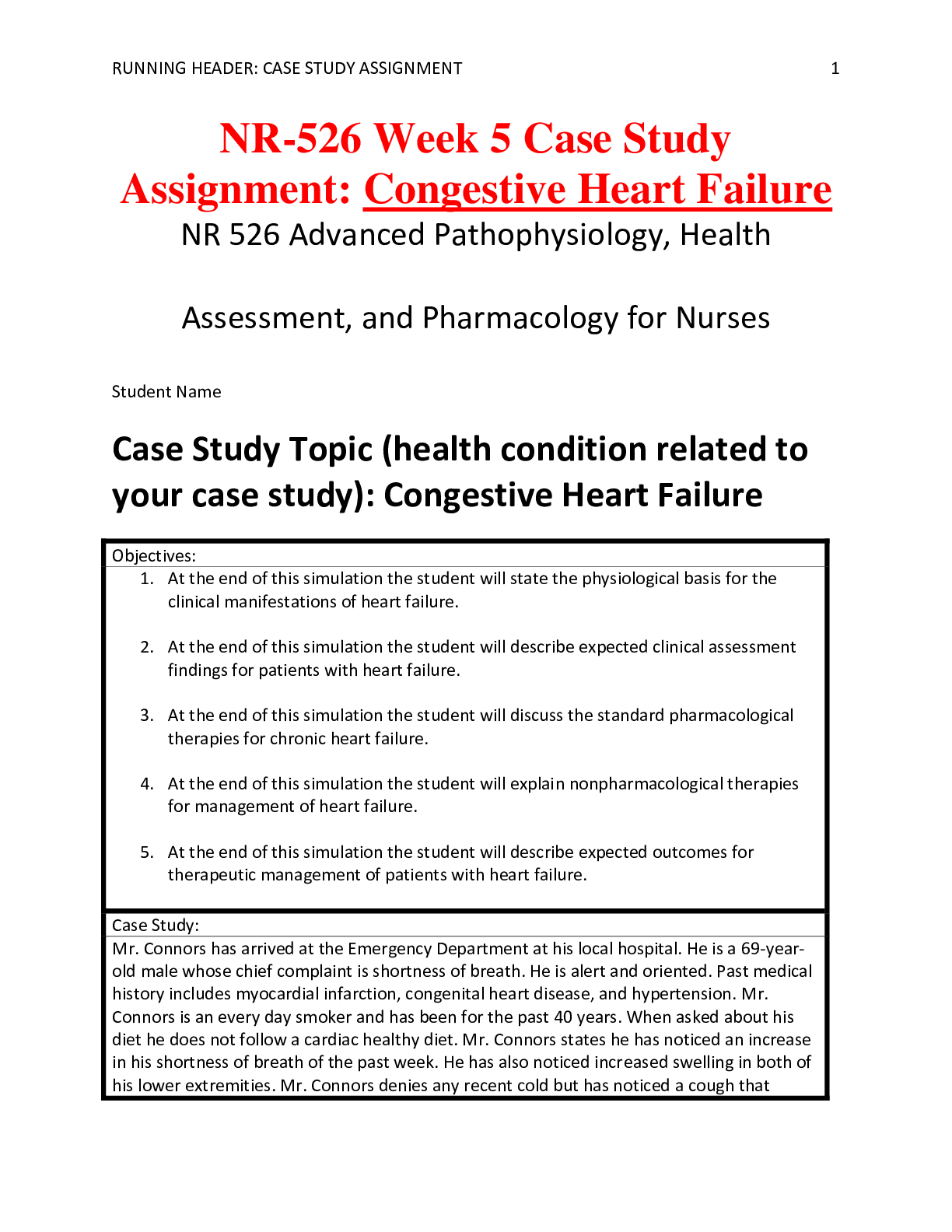


 – Chamberlain College of Nursing.png)
